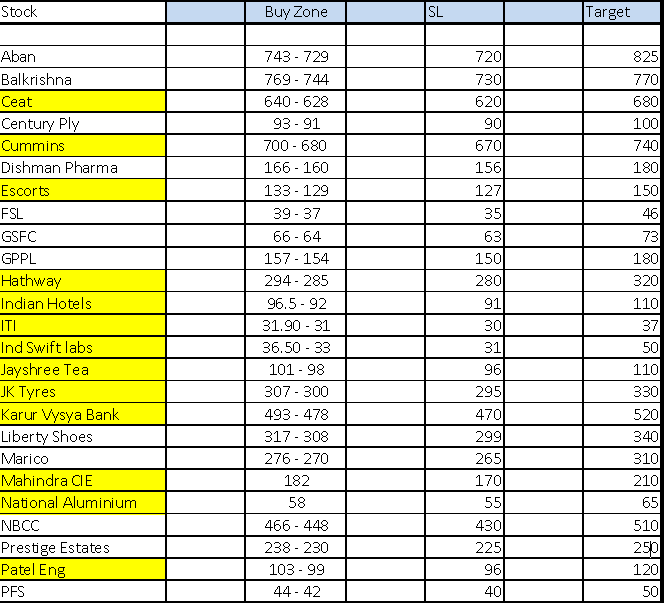BUY 8200 CE @ 35 AROUND
&
BUY 7750 PE @ 42 AROUND
NIFTY CMP 7982 FUT~~~!!!
FOR BANK NIFTY CMP 15505
BUY 16000 CE @ 125
&
BUY 15000 PE @ 130-135
NOW EVERYONE SAYING 8300 OR 7700-7600 OHHH PPL DOING UP & DOWN YOU THINKING WHAT TO DO????WE HAVE FULL MONTH TO HOLD PAIRS AND RBI POLICY ABOUT TO COME AFTER THAT RESULT WEEK BIG MOMNT CAN TAKE PART IN MARKET SO MAKE A PAIR AND SIT ON THE CHAIR MONEY WILL MINIMUM DBBL FRM HERE IN PAIR I THINK THIS REST GOD KNOWS...ALL THE BEST GUYS CHEERRSSS~~~!!!
WHAT EVER YOU EARN FROM MY CALLS PLEASE GIVE 10% PROFIT'S FOOD TO COWS AND DOGS HELP THM GOD WILL HELP YOU-!!!
&
BUY 7750 PE @ 42 AROUND
NIFTY CMP 7982 FUT~~~!!!
FOR BANK NIFTY CMP 15505
BUY 16000 CE @ 125
&
BUY 15000 PE @ 130-135
NOW EVERYONE SAYING 8300 OR 7700-7600 OHHH PPL DOING UP & DOWN YOU THINKING WHAT TO DO????WE HAVE FULL MONTH TO HOLD PAIRS AND RBI POLICY ABOUT TO COME AFTER THAT RESULT WEEK BIG MOMNT CAN TAKE PART IN MARKET SO MAKE A PAIR AND SIT ON THE CHAIR MONEY WILL MINIMUM DBBL FRM HERE IN PAIR I THINK THIS REST GOD KNOWS...ALL THE BEST GUYS CHEERRSSS~~~!!!
WHAT EVER YOU EARN FROM MY CALLS PLEASE GIVE 10% PROFIT'S FOOD TO COWS AND DOGS HELP THM GOD WILL HELP YOU-!!!








